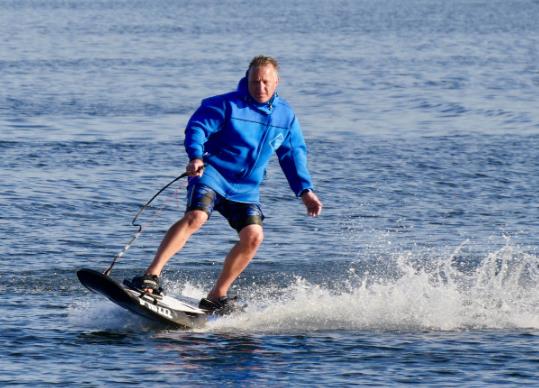Foil Surfing Board: What Are the Essentials?
Foil surfing, an exhilarating evolution in the world of water sports, combines the thrill of surfing with the cutting-edge technology of hydrofoils. By lifting the board above the water, foil surfing offers a unique experience akin to flying. For those captivated by this innovative sport, understanding the essentials of a foil surfing board is crucial. Here’s a detailed look at what makes up the core components and what to consider when diving into the world of foil surfing.

The Hydrofoil: The Heart of Lift
The hydrofoil is what sets the foil surfing board apart. Attached to the bottom of the board, it consists of a mast and wings. The mast's length can vary, typically ranging from 24 to 28 inches, affecting how high the board rides above the water. Longer masts offer more clearance for choppy conditions, while shorter ones provide better control and stability. The wings are responsible for generating lift. Larger wings provide more lift at slower speeds, making them ideal for beginners or surfers looking to ride smaller waves or wake.
Board Design and Volume
Foil surfing boards are shorter and more voluminous than traditional surfboards. Volume, measured in liters, is crucial as it influences buoyancy and stability. For beginners, a board with higher volume (100+ liters) is recommended for easier takeoffs and more forgiveness. Advanced riders may opt for lower volume boards (60-80 liters) for more agility and responsiveness.
Construction Materials
The construction of a foil surfing board impacts its performance, weight, and durability. Most boards are made from EPS foam with a carbon fiber or fiberglass reinforcement, offering an optimal balance between lightness and strength. Carbon fiber boards are on the premium end, providing the best stiffness-to-weight ratio but at a higher cost. Fiberglass offers a more affordable yet still durable option.
The Foil Assembly
A critical aspect of the foil surfing board is its assembly, which includes the mast, fuselage, and wings. The fuselage connects the mast to the wings, and its length can affect the board's stability and maneuverability. Wings come in various shapes and sizes, with larger front wings for lift and smaller rear wings for stability. Selecting the right assembly based on your weight, skill level, and riding style is essential for optimal performance.
Compatibility and Modular Systems
Many foil surfing boards feature a modular design, allowing for the interchangeability of parts. This system enables surfers to customize their setup according to different conditions and preferences, making it a versatile option for those who enjoy various water sports like kite foiling, SUP foiling, or wake foiling.
Safety Gear
Safety should never be overlooked when foil surfing. Due to the speeds and heights involved, wearing a helmet, impact vest, and proper wetsuit is advisable to protect against falls and collisions. Additionally, using a board leash ensures that your board doesn't stray too far if you fall off.
Where to Find Your Foil Surfing Board
For those ready to embark on this exciting journey, finding the right foil surfing board involves research and consideration of the factors mentioned above. Specialty water sports shops, online retailers, and direct purchases from manufacturers are great starting points. With prices ranging broadly based on materials and design, from $800 for entry-level models to over $2,000 for high-end setups, there's a foil board for every budget and ambition.
Conclusion
Foil surfing represents a thrilling advancement in water sports, offering riders the sensation of flight over the waves. Understanding the essentials—from the hydrofoil and board design to safety gear—is crucial for anyone looking to dive into this innovative sport. With the right equipment and a spirit of adventure, foil surfing opens up new horizons for enthusiasts seeking to push the boundaries of what's possible on the water.